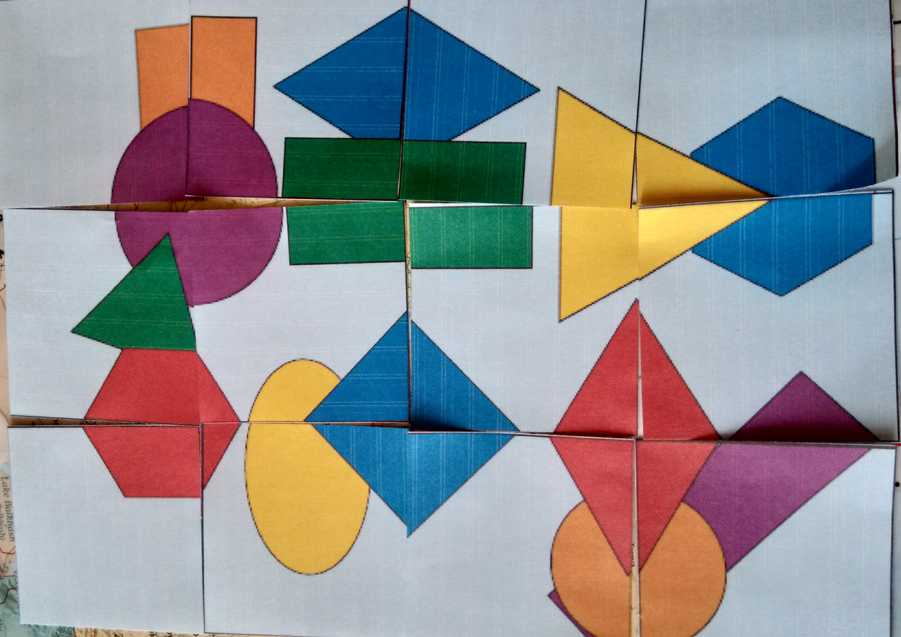Or search by topic
Number and algebra
Geometry and measure
Probability and statistics
Working mathematically
Advanced mathematics
For younger learners
Jig Shapes



- Problem
- Getting Started
- Student Solutions
- Teachers' Resources
This problem encouraged you to work as a group to discover all of the different shapes on the cards. Part of the challenge was to describe the shapes (or part of them) on your own card and understand the explanation of others. In this way, you could work together to determine all of the different shapes in the Jig Shapes challenge.
Charlie, from The Haberdashers' Aske's Boys' School, suggested that it's good to try to describe the sides and edges that you see on your card. He also suggested describing any whole shapes.
We wonder whether any of you tried arranging the cards? Have a go - what happens?
We also received some photos of the finished problem. Thank you to both Ci Hui Minh Ngoc (who attends Kong Hwa School in Singapore) and Owen (who is home educated in the UK). Owen also recorded the different types of shapes in his solution. We wonder if you can name the shapes too and perhaps suggest some shapes that we might have included? Perhaps you might design your own puzzle for another group to solve, using some of those different shapes?
Here's is Owen's photo of his finished problem:

You may also like
Biscuit Decorations
Andrew decorated 20 biscuits to take to a party. He lined them up and put icing on every second biscuit and different decorations on other biscuits. How many biscuits weren't decorated?

